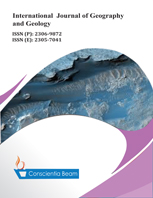Indicators of Sustainability in Vernacular Settlements Hot Dry Region of Iran, [Case Study: Kerman-Meymand]
DOI:
https://doi.org/10.18488/journal.10/2016.5.8/10.8.146.155Abstract
Nowadays, sustainable development theory is one of the most challenging subjects in urbanism field. Old settlements have strong relationship with their environment. Vernacular settlement can provide suitable patterns of sustainable existence, which has been created from generations’ experiences completion. It has the lowest damage to natural system by intelligent usage of natural presents. Warm and dry areas have special climatic features. settlement of such areas were positioned and constructed based on special principals which were consistent with environmental features and ecological capabilities. These settlements are consistent with natural texture and site ecology and capabilities. It not only imposed no destruction on their environment, but also beyond that, play it's role as a perfection reaching agent for material. the goal of this paper is investigation of persistence indexes of vernacular settlement in warm and dry area. This paper first has a brief review on persistence concepts and following that on sustainable urbanism and urban persistence indexes and after that describe climatic and geographical features of Iran’s warm and dry areas, after that Meymand (as a case study) is analyzed with morphological approach.

